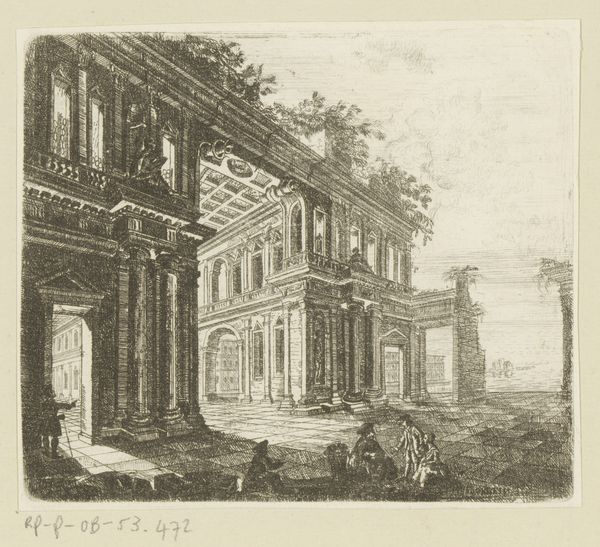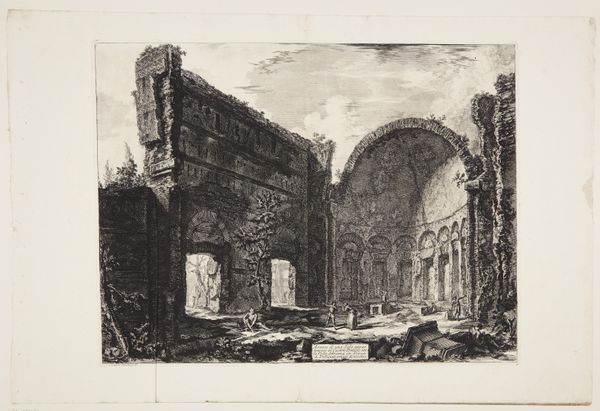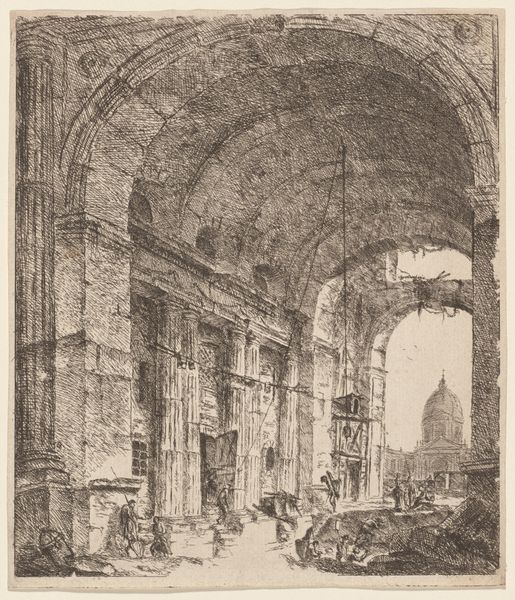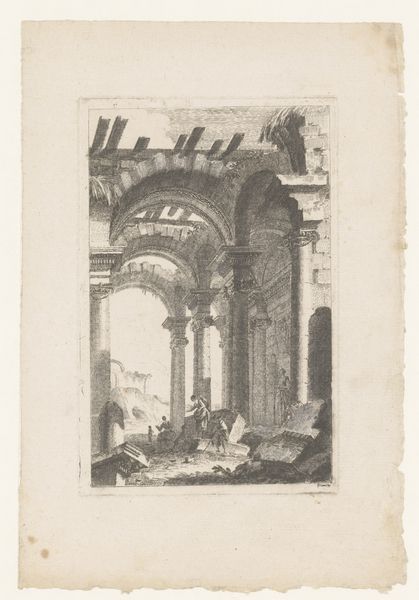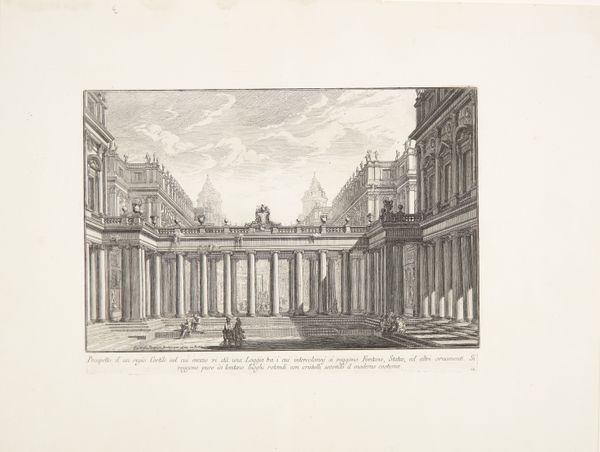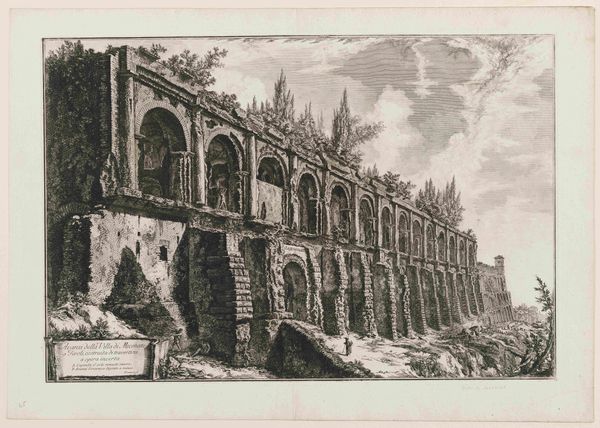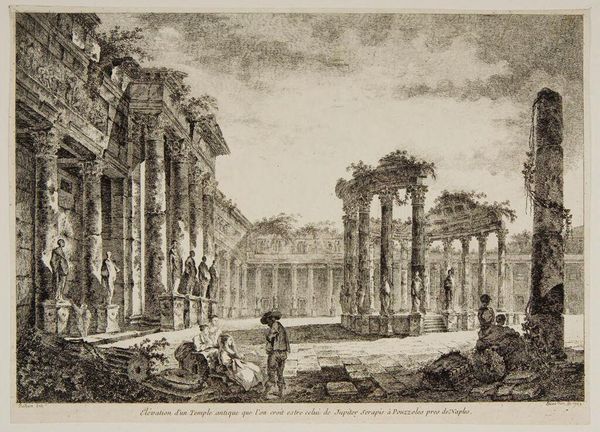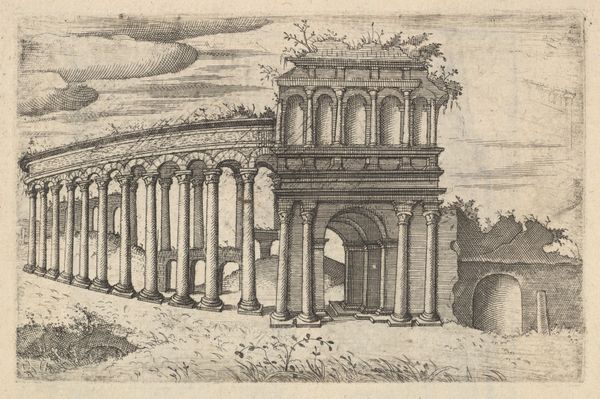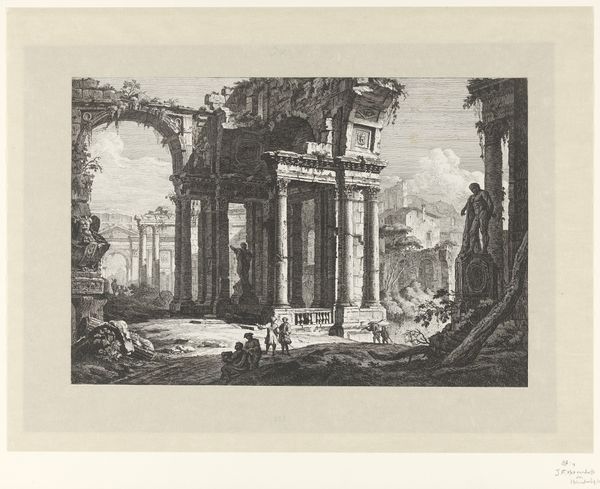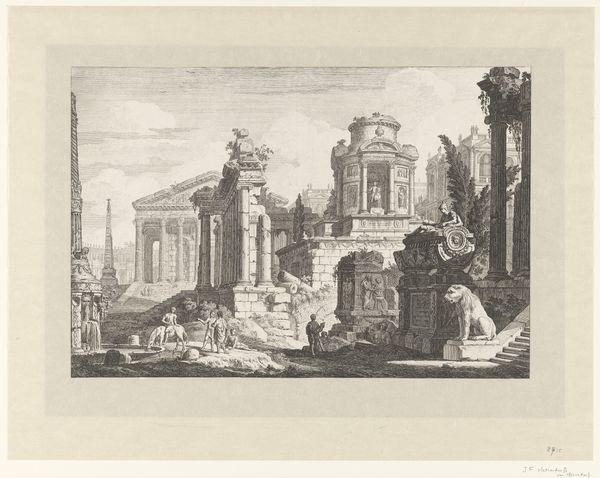
Dimensions: height 146 mm, width 167 mm
Copyright: Rijks Museum: Open Domain
Editor: This etching, “Fantasie architectuur met enkele figuren” attributed to Johann Andreas Benjamin Nothnagel, dating roughly from 1739 to 1804, presents a grand, almost theatrical architectural landscape. I’m immediately struck by how the precise lines of the buildings contrast with the somewhat romantic ruin-like quality. What are your thoughts? Curator: For me, this image invites us to consider the social function of printmaking during this period. The etching process itself – the labor, the materials used, the intended audience – it’s all deeply relevant. These "fantasy architectures" circulated widely. Consider the dissemination of such imagery to an expanding middle class eager to consume representations of grandeur and classical ideals. What kind of aspiration do you think is evoked, and whose labour underpins it? Editor: So, it’s less about the artistry of the individual and more about how it functioned as a commodity? The printmaking enabled accessibility and maybe even fueled social climbing. But where does the baroque aesthetic and themes of landscape fit within that context of production? Curator: Exactly. The Baroque style, with its emphasis on drama and grandeur, becomes a marketing tool. The picturesque landscape, often incorporated, suggests an idealized relationship with the natural world – another commodity to be consumed. These details invite us to reflect upon how the materiality and means of production contributed to the artwork's cultural meaning. Editor: That’s fascinating. I hadn’t considered the landscape itself as a form of material, shaped and delivered as an aesthetic idea to a customer through printmaking. It makes me rethink my idea of it being romanticized. Curator: Indeed. Shifting our focus towards the material conditions challenges any easy categorization, which can ultimately lead to a far richer engagement with the art and culture of the period. Editor: I will definitely look into that. Thanks for sharing.
Comments
No comments
Be the first to comment and join the conversation on the ultimate creative platform.


